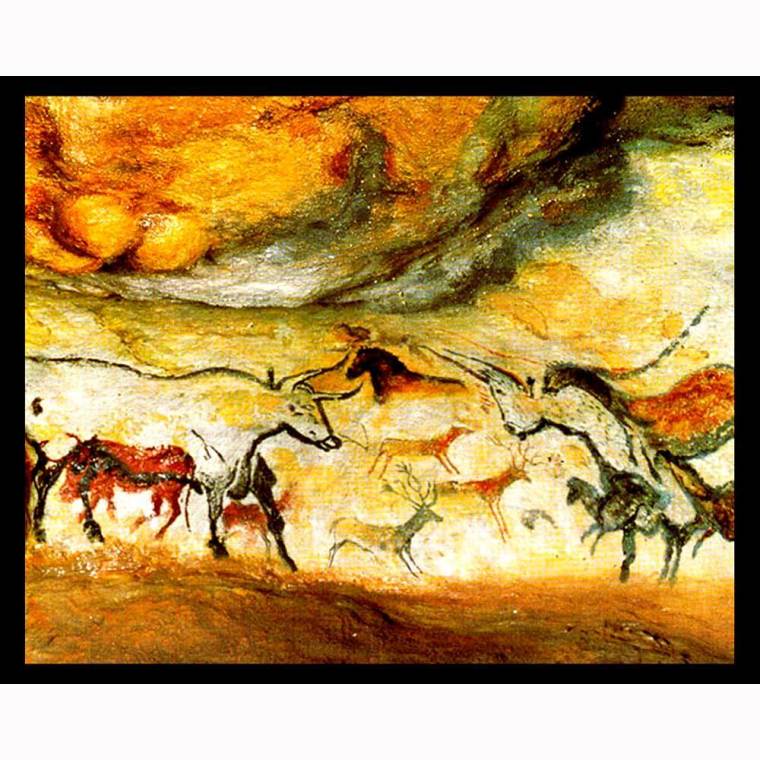
Three different sets of ancient cave paintings have continued to throw the theory of evolution on its head.
The Altamira Cave in Spain was discovered in 1868. France’s Lascaux and Chauvet caves came to light in 1940 and 1994, respectively.
Picaso
After viewing paintings in Altamira, Pablo Picasso cried in despair, “We have discovered nothing. After Altamira, all is decadence.”
At the Prehistorical Congress in Lisbon in 1880, the idea the paintings were tens of thousands of years old (Altamira Cave) was rejected, due to “the supreme artistic quality, the exceptional state of conservation of the paintings, and the striking quality of its polychromatic art.”
No-one thought humans from the “pre-historic” age could possibly have the skills and expertise to have painted something of such quality.
In 1901, archaeologist Henri Breuil said the works were Paleolithic and based on their erroneous assumptions, were pained 36,000 years ago. Modern evolutionary estimates range from 15,000 to 50,000 years ago.
The supposed ages of tens of thousands of years for all this cave art provoked much controversy from the outset. The drawings were simply too good.
Could ‘cavemen’ possibly have produced such artistic masterpieces? And why can’t modern artists surpass their proficiency?
Then there’s the other two caves in France.
Lascaux Caves have the Great Hall of the Bulls.
The cave has over 600 paintings of horses, cows, bulls, stags, bears, lions and a rhinoceros.
Some them are huge, up to 4.5m (15 feet) long.
Creation Magazine describes it as “Enormous snorting beasts, the thundering of heavy hoofbeats, clouds of dust, and the smell of sweaty bovine bodies come to my mind at the very mention of the names Lascaux, Chauvet and Altamira.
“Imagine the huge physical effort as the artists worked on their giant canvases and their likely joy as they stood back and saw the power of their images.”
Great Hall of the Bulls
Lascaux is most famous for its representations of the now-extinct wild bull, the mighty aurochs. The name has its roots in old German for ‘primeval ox’ and it is believed to be the ancestor of all domesticated cattle.
The last wild aurochs died in Poland in 1627.
Lascaux has four mighty aurochs, the largest is 5m long.
In all, 2,000 figures adorn this hall; horses, stags swimming across a river, and much more.
The paintings are so good, these “cavemen” demonstrate sophisticated artistic skills such as movement, proportions and superimposed images. This includes the artists’ mastery of composition and line; their use of colour and tone, all from substances like hematite, charcoal, and various shades of ochre.
More superlatives
Artist Penone said “The painter at Chauvet had used the hollow in the rock wall to emphasise the shape of the animal … to give an impression of relief.”
“This is a very sophisticated representative technique. It gives the impression of movement. “In the paintings … there is a repetition of signs, which gives an idea of progress, as if the figure is moving, like in the futurist works of the early 20th century.
“It is unbelievable finding this whole repertoire of languages and expressions, so close to our own culture, in a 35,000-year-old representation. I find it extraordinary.”
So how did these cave paintings come about?
The idea of them being modern paintings made to look ancient was ruled out from the very beginning.
So how could these ancients have developed the skills to paint such awesome representations?
A biblical creationist stance makes complete sense here.
These painters were part of a group which arrived in Europe following the Babel dispersion. This occurred in the first few centuries after the Flood, some 4,500 years ago.
This means their ancestors (Noah and family) already had a level of sophistication reflected in shipbuilding technology (Genesis 6–8).
Metalworking had been established in the first few generations after Adam (Genesis 4:22).
Though some groups would not have taken all this know-how with them in the forced post-Flood dispersion, the potential of all people for ingenuity and skill would have been the same as it is today.
The scepticism about Paleolithic hunters being able to complete these sophisticated paintings was because they believed “cavemen” were primitive brutes, closer to their supposed animal ancestors than people today.
Ironically, the early critics were right about one thing—the unreliability of the dating assumptions.
The Altamira / Lascaux / Chauvet cave art stands as a spectacular testimony to the reality of biblical history, and the bankruptcy of ‘human evolution.’
Note: Phrases and some other information courtesy of Creation Magazine.
John Skinner served as an infantry soldier in Vietnam then the Tasmanian Police before taking up the position of CEO of the Australian Rough Riders Association (professional rodeo based in Warwick Qld). Before retirement to his small farm, he was a photo-journalist for 25 years. He is married with 3 children and 7 grandchildren.